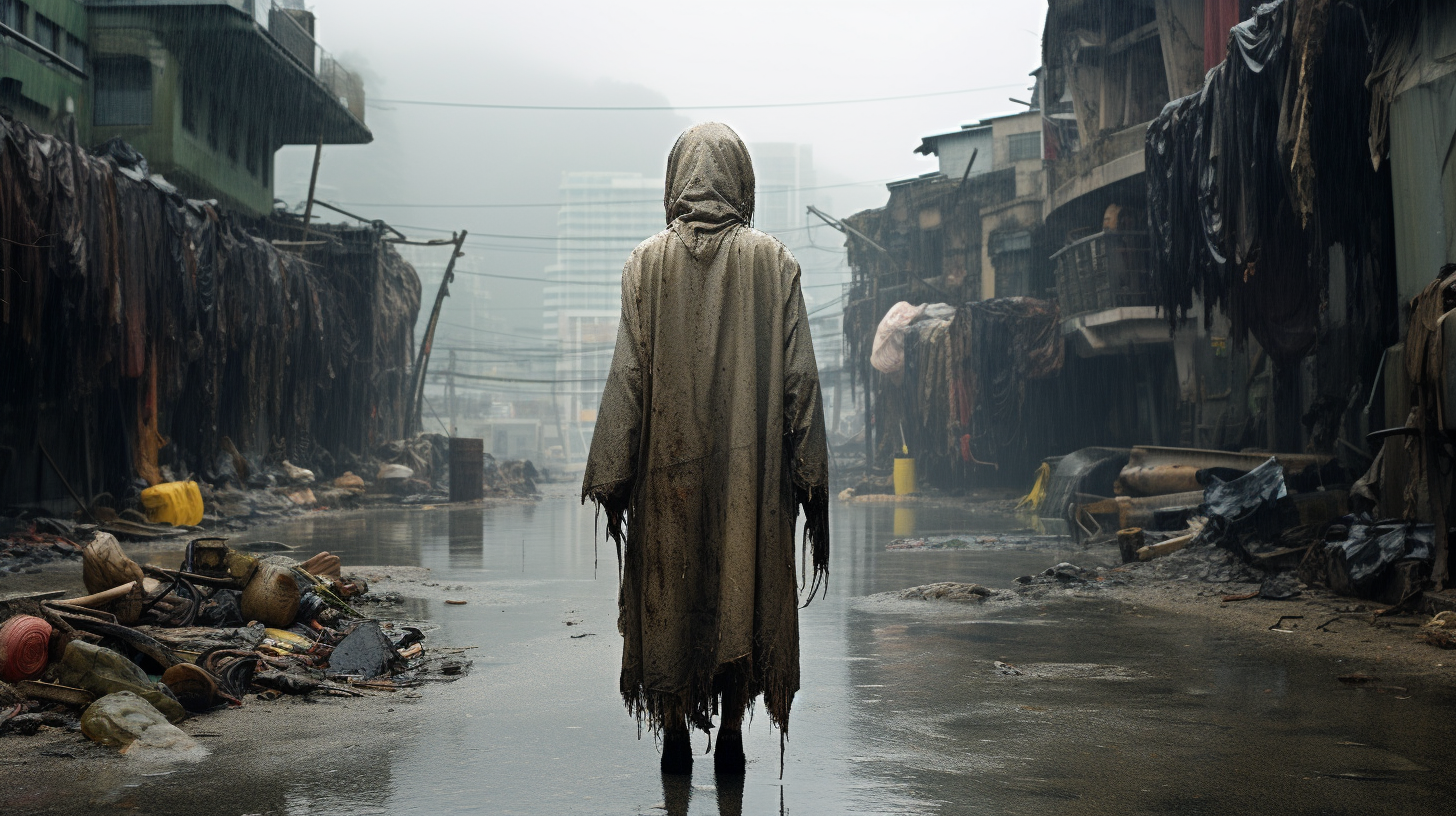In a world where rain has been relegated to whispers of the past, the remnants of its memory echo in the cultural crypt of human society. With every empty sky, we are reminded of what once was: a time where water cascaded from the heavens, providing life, lore, and a touchstone for human expression. Now, as our parched planet gasps for a reprieve, we grapple with the shadows rain has left behind, shadows that dance in the ‘Rain’s Remnant Rituals.’
Rain dances, once spiritual ceremonies beseeching the skies for nourishment, now emerge as quaint performances. The dancers move to a rhythm that the clouds no longer honor, circling under a barren firmament. These rituals have morphed from hopeful incantations to mournful memorials, honoring a phenomenon reduced to myth. In hallowed halls, the youth learn of rain through holograms and simulations, their eyes wide with wonder at the alien concept of water falling freely from the sky.
Artists, those keepers of human emotion, once painted with raindrops. Literally—as canvases were kissed by the drizzle, and figuratively—as rain provided metaphorical ink for their oeuvre. Now, their brushes are dry, canvases cracked, and metaphors distilled from the arid air. Sculptors craft monuments: ‘The Weeping Stones’, ‘Cloudless Journeys’, resonating with the haunting absence of rain. This intangible presence within their work bears testament to its impactful void.
Music has not been spared. Songs with tempos like the pitter-patter of raindrops against rooftops now carry a weight heavier than the thunder of a storm. The melancholy in these tunes is palpable, conjuring a collective yearning in their listeners. Songs telling tales of rainstorms and drizzle-soaked lovers spark curiosity among a generation that has never had the pleasure—or plight—of opening an umbrella.
Education has been transformed. Where children once learned the water cycle’s sacred loop, they now learn of the cycle’s unraveling—the Great Desiccation. Desks sit with globe-shaped containers that mimic rainfall, a tactile experience as close to real as now possible. Through this distant lens, rain education is a field in itself, rife with epistemological quandaries over what to preserve about a lost world.
In the midst of this drought of the skies, hope does not suffice as sustenance. Instead, a collective resilience has sprouted, much like the unlikely blossoms in cracked earth. Communes have arisen, places where the lore of rain is kept alive in whispers and murals, protected from the sweeping dryness of oblivion. Here, the story of rain is a sacred text, and its recollection a form of rebellion against the drought’s final victory.
It is through these remnant rituals that we attempt to grasp the intangible, to hold onto the droplets of a legacy evaporated into the abyss. Yet, our clenched fists only hold the dust of memory, a testament to what was lost in the recklessness of human progression. As the new year dawns on this thirsty world, let us look upon these cultural echoes, these remnant rituals of a lost phenomenon, not with sorrow, but with the silent acknowledgment: We are the custodians of the rain’s final rites.
